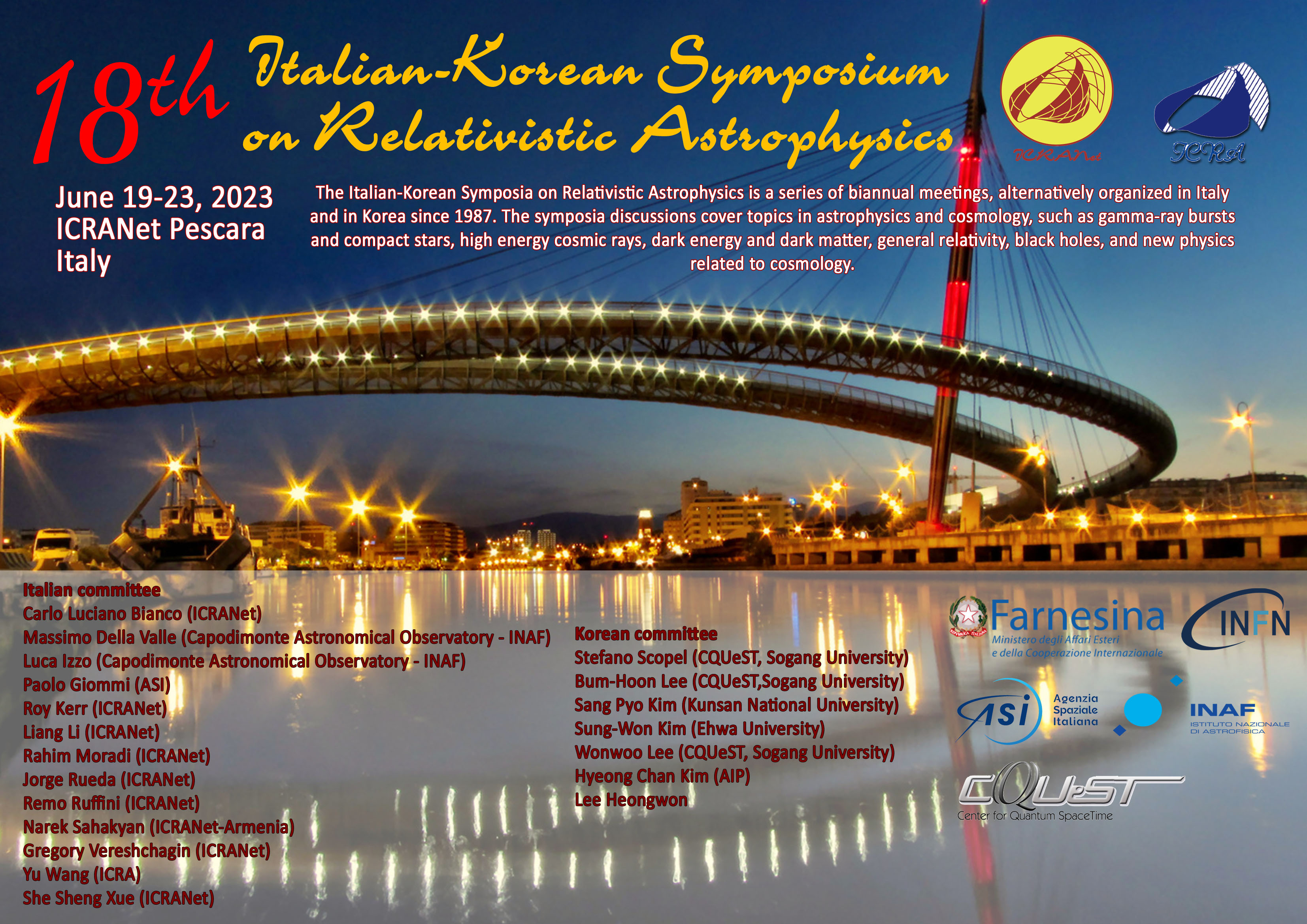18th Italian-Korean Symposium on Relativistic Astrophysics
→
Europe/Rome
ICRANet, Pescara
ICRANet, Pescara
, ,
Description
 This symposium started in 1987, then continued for every two years alternatively in Korea and Italy with the support from Korea Science and Engineering Foundation (KOSEF), Consiglio Nazionale delle Ricerche (CNR), International Center for Relativistic Astrophysics Network (ICRANet) and hosting institutes. Main purpose of this symposium is to accelerate the exchange between scientists of Italy and Korea, especially young researchers.
This symposium started in 1987, then continued for every two years alternatively in Korea and Italy with the support from Korea Science and Engineering Foundation (KOSEF), Consiglio Nazionale delle Ricerche (CNR), International Center for Relativistic Astrophysics Network (ICRANet) and hosting institutes. Main purpose of this symposium is to accelerate the exchange between scientists of Italy and Korea, especially young researchers.
Traditionally, the subjects of this series of symposium have been mainly theoretical astrophysics, especially in the fields of relativistic astrophysics. In this meeting the focus will be on irriducible mass, gravitational wave emission from GRBs, ellipsoidal configurations of equilibrium in General Relativity.
Contact
Participants
